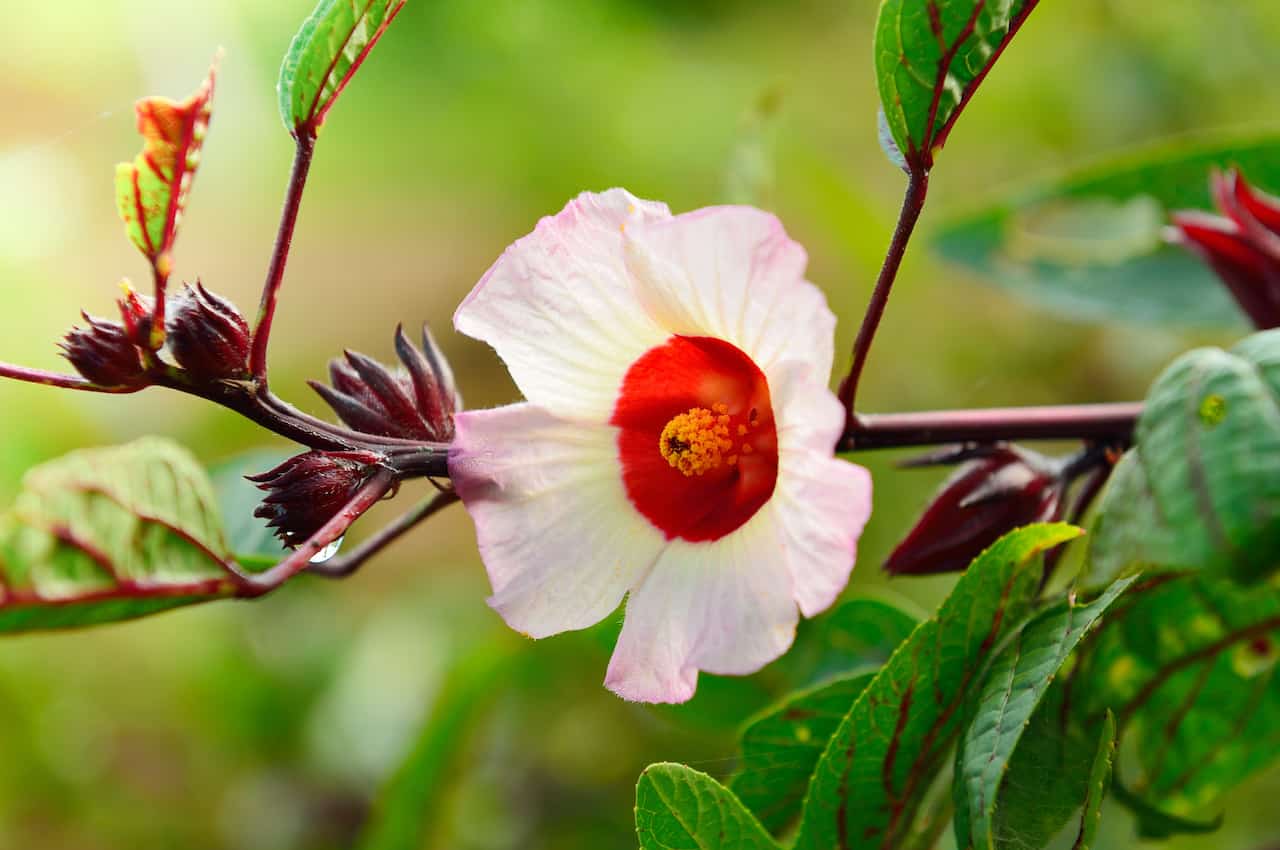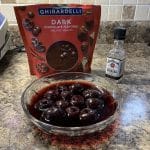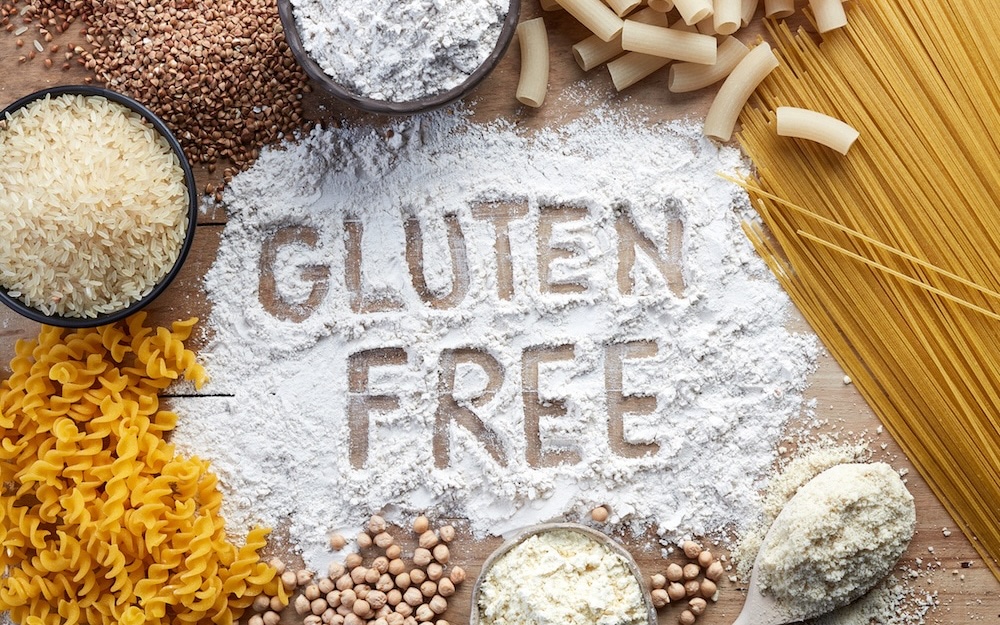Try Edible Flowers in Your Next Culinary Creation.
Cooking with flowers is a fun way to add a touch of fun and flair to your recipes.
You can create exciting, flavorful and visual experiences when you add lavender to bread or dandelions to salad. There are a lot of delicious flowers that can be used in dishes as both a garnish and as a spice.
Important Tips to Keep in Mind:
No Pesticides: Only eat organic flowers. Do not eat flowers that you get at the floral department in the grocery store or from a commercial florist. This is because the majority – if not all – are grown using pesticides.
Never eat flowers picked from the roadside, a park, or any flowers that you cannot confirm as pesticide-free. When using flowers in cooking (fresh, dried or their extracts) double check that they are from organic, pesticide-free flowers only. Better yet, grow them yourself.
Fragrance: The more fragrance a flower has, the stronger the flavor will be.
Color: Brighter or deeper floral color will also result in more flavor.
Here are the Flowers:
1. Calendula
These happy flowers add a bright spot to any summer/fall garden. They are tasty on scrambled eggs, in soups, herb butters and other foods.
Color: Bright yellow or orange. Flat petals.
Parts: Flower Petals.
Flavor: The flavors can range from tangy to peppery, bitter to spicy. Also known as the poor man’s saffron because the taste resembles saffron.
Uses: Sprinkle the petals on salads, pasta, rice, soups, herb butters, scrambled eggs, or wild greens. The full flower makes a pretty garnish on the side.
Prep: Fresh or dried.
2. Carnations
Carnations are so pretty. They also have a spicy fragrance. Carnations have been used as cake decorations and steeped in candy and wine. They have sweet petals but be sure to cut them away from the bitter white base before eating them.
Color: Multiple colors.
Parts: Petals only.
Flavor: Light clove with nutmeg overtones.
Uses: A nice touch to salads or aspics. Very pretty when the whole flower is used on wedding cakes or other baked goods.
Prep: Fresh or infused. Remove the pistils and stamens. Be sure to cut the petals away from the bitter white base. Use whole petals or chop them and sprinkle on your dishes.
Other Notes: Carnations have been used in the French liqueur “Chartreuse” since the 1600’s.
3. Chamomile
These tiny daisy-like flowers have been used in cooking and traditional medicines for thousands of years. One difference between chamomile flowers and daisies is that chamomile flowers are much smaller than daisies and have raised centers (see above) whereas daisies have flat centers.
Color: Small white flowers with raised yellow centers.
Parts: Flower
Flavor: Slightly sweet and earthy.
Uses: Teas. Smoothies, Syrups. Baked good. Desserts. Anything you want them in.
Benefits: Best known for reducing anxiety and improving sleep.
Prep: Fresh or dried. Pick the flowers when in full bloom but before the petals start to droop. Steep flowers in hot liquid to extract the flavor and to release the bioactive compounds.
4. Clover

Clover was my first introduction to edible flowers as a child. I remember spending hours looking for 4-leaf clovers when my dad taught us that we could eat the flowers – cool! He said that the sweetest part of the flower is the bottom of the petals. Just pluck the petals off the head and chew on the bottoms. It was great fun! But there’s so much more you can do with them.
Colors: White, Pink, Redish Purple.
Parts: Flower petals, head and stem.
Flavor: Lightly sweet.
Uses: Sprinkle the petals to add color to any dessert or salad. Add to honey, lemonade or tea. The whole clover flower also makes a pretty garnish.
Benefits: White clover tea has been used for coughs and colds.
Prep: Fresh or Dried. Choose the flowers with the brightest color for the best taste. Avoid flowers that are turning brown as they can be bitter and tough.
Cautions: Raw flower heads can be difficult to digest.
5. Dandelions
Considered a weed by many, this plant is actually a member of the daisy family and highly nutritious. The flower buds can be eaten raw, tossed into a salad and even steamed. Make sure to pick the leaves and flower buds when they are very young and close to the ground. The more mature the leaves and flowers are, the more bitter they taste.
Color: Yellow flowers
Parts: Young flowers before they’ve opened. Young leaves. The Roots.
Flavor: The young flower buds are slightly bitter but much sweeter than the opened flowers which are very bitter.
Uses: Salads, wine, teas, jelly, stews, casseroles or any dishes that call for hearty greens. Young dandelion petals add a unique flavor, not to mention a nice visual when sprinkled over rice.
Benefits: Powerful antioxidant properties.
Prep: Fresh or steamed. In salads, the leaves should be picked before the little flowers open. When using the flower buds, be sure to pick them when they are very close to the ground and bunched up like little marbles.
6. Hibiscus
The edible variety of Hibiscus is known as “Roselle” and is well known for its medicinal and culinary uses. The flowers can be eaten raw but are mostly used in herbal teas, jams, and salads.
Colors: White with a red center
Parts: Flower
Flavor: A cranberry-like flavor with citrus overtones. Slightly tart.
Uses: Teas (hot or cold), jams, salads, and relishes to name a few.
Benefits: Relaxing. Some research has suggested that hibiscus may help with reducing blood pressure and cholesterol levels. If you have blood pressure issues, consult with your doctor before consuming large quantities of Hibiscus.
Prep: Fresh or dried. Remove pistils and stamens from the center of the flower before consuming.
Cautions: Use sparingly. ONLY USE the edible variety of Hibiscus known as “Hibiscus Sabdariffa (Roselle) not to be confused with the many ornamentals out there.
7. Lavender
Lavender is a woody, floral herb from the mint family. There are many varieties but the most popular for cooking is “English Lavender” and “Munstead Lavender”. It has a multitude of tiny flowers on each stem and is the most fragrant as well as flavorful. It goes great with chocolate, citrus, and berries. It can also be paired with savory herbs such as rosemary, sage and thyme.
Color: Various shades of violet and purple.
Parts: Flowers. When cooking, use either English or Munstead Lavender.
Flavor: Strongly floral. Tastes like it smells. Use sparingly to start with when cooking and slowly add more as necessary.
Uses: Adds a nice touch sprinkled on ice cream and sorbets, in baked goods, or spice rubs. It can also be infused into chocolate, syrups, honey, and liqueurs.
Benefits: Calming and relaxing.
Prep: Fresh or Dried.
Cautions: Use sparingly. When cooking (as with any flower or herb but especially lavender) it’s best to start with small quantities and increase it slowly until you achieve the desired taste, otherwise the flavor can quickly become overpowering.
8. Nasturtium
This lovely vine flower adds color and flavor to any dish. Nasturtium have brightly colored blossoms and a savory flavor.
Color: Bright red, orange or yellow.
Parts: Flowers and the leaves – raw or cooked.
Flavor: Savory and slightly spicy with a peppery finish. The blossoms are milder than the leaves.
Uses: Beautiful as a garnish for salads, pasta, cakes and other pastries.
Benefits: They contain a variety of minerals and compounds with anti-inflammatory properties.
Prep: Fresh
9. Pansy
Pansies are not only beautiful to look and, but pleasant to eat. You can enjoy both the regular size pansies as well as the small version known as “Johnny Jump-ups”.
Color: There are multiple versions of these tri-color flowers. The most common are purple, blue and yellow.
Parts: Flowers and stems.
Flavor: The flowers have a mild, sweet green flavor. The stems have a wintergreen overtone.
Uses: Fresh or candied petals bring a decorative touch to salads, desserts, pastries, cakes and cookies.
Benefits: Pansies contain a rich source of antioxidant and anti-inflammatory compounds.
Prep: Fresh or candied.
10. Roses
Roses are an elegant garnish on anything, and in anything. Fresh or dried, adding roses will make everything more special.
Color: Pink, Red, and Lavender roses are the most fragrant and flavorful.
Parts: Buds and Petals.
Flavor: All varieties of roses are edible but the most fragrant will have the most flavor.
Uses: Use in teas, baked goods, green salads or fruit salads, anything you want really. Dry the petals and add them to granola or other herb mixes. Add rose-infused liquid to teas, jellies and jams. You can sugar coat for garnishing desserts or bake them right in. Also, adding roses to butter can give a romantic touch to ordinary ingredients.
Benefits: Reduces anxiety and promotes relaxation.
Prep: Fresh or dried. For rose-infused liquids, steep 1 tablespoon dried rose petals in 6oz of freshly boiled water or other hot liquid for 10 minutes or until the petals turn dark. Strain before using.
Cautions: Never eat roses or any flowers that you buy at the floral department in the grocery store or from a commercial florist! I can’t stress this enough. This is because the majority – if not all – are grown using pesticides.
11. Squash Blossoms
Squash blossoms also known as zucchini flowers can come from any summer winter squashes. Whether fresh, baked or even fried, they can add a nice touch to quesadillas, burritos and other autumnal foods.
Color: Bright yellow or orange flowers.
Parts: The Flower. If you want to have your squash harvest AND eat the flowers too, pick only the “male flowers”. The male flowers have a long thin stem (see photo) and will grow around the outside edges of the plant. The female flowers are usually close to the center of the plant and have a small, bulbous base at the bottom of the flower where it meets the stem. The bulbous base is what will turn into the squash or zucchini.
Flavor: Tastes mildly like the squash itself.
Uses: Use as a garnish or chop and add to salads. Try them in herb cheeses. They can be eaten raw, baked, and even fried. Great in quesadillas and other southwestern foods. Fry or bake them until the petals are crispy.
Prep: Use quickly as they wilt fast.
12. Violets
Sweet Violets are actually a member of the pansy family. You can use them in salads, pestos, cakes, drinks, yogurt and so much more.
DO NOT EAT AFRICAN VIOLETS! The ornamental houseplant with the fuzzy leaves is an entirely different variety and are not to be eaten.
Color: Purples and blues are the best for consuming.
Parts: Flowers and leaves.
Flavor: Floral. Very light flavor of violet.
Uses: Lemonade, cake decorations, yogurt topping, dessert topping, candy and loads more.
Benefits: Brings smiles. The leaves are high in vitamins A and C.
Prep: Fresh. Dried. Candied. If making candied violets, be sure to use them quickly as they wilt fast.
Cautions: Again… DO NOT EAT African Violets! African Violets are an ornamental houseplant with fuzzy leaves and yellow pistils are are not to be eaten.
In Summary
These are just 12 of the many flowers out there that can be used in cooking. Remember to start with small quantities and then slowly add more until you achieve the taste you want – the intense flavor of many flowers can become overpowering really fast!
When using the flowers for food (fresh, dried, or their extracts) always double check that they are from organic, pesticide-free flowers only.
I hate to be a nag but… Never eat any flowers that you get at the floral department in the grocery store or from commercial florists. This is because the majority – if not all – are grown using pesticides. They were grown for their beauty, not for eating. Also, never eat flowers picked from the roadside, a park, or any flowers that you cannot confirm as pesticide-free.
There are thousands of delicious possibilities out there. Experiment, be creative, but most of all have fun with edible flowers.
Here’s to Your Good Health!
Views: 137



























